Last week Lama Jampa Thaye gave six days of teachings on Zhentong Madhyamaka as part of this year’s Karmapa Public Course at KIBI - Karmapa International Buddhist Institute.
On 6 March, during the opening address, Lama Jampa Thaye reflected that the establishment of the Institute is a result of Shamar Rinpoche's fulfilment of the vision of HH the 16th Karmapa, Rangjung Rigpa Dorje. As such the institute follows the tradition of great Buddhist Institutions in India, from Nalanda onwards. Such places were established by great masters so that people could receive and practice the dharma and also benefit from being in their presence.

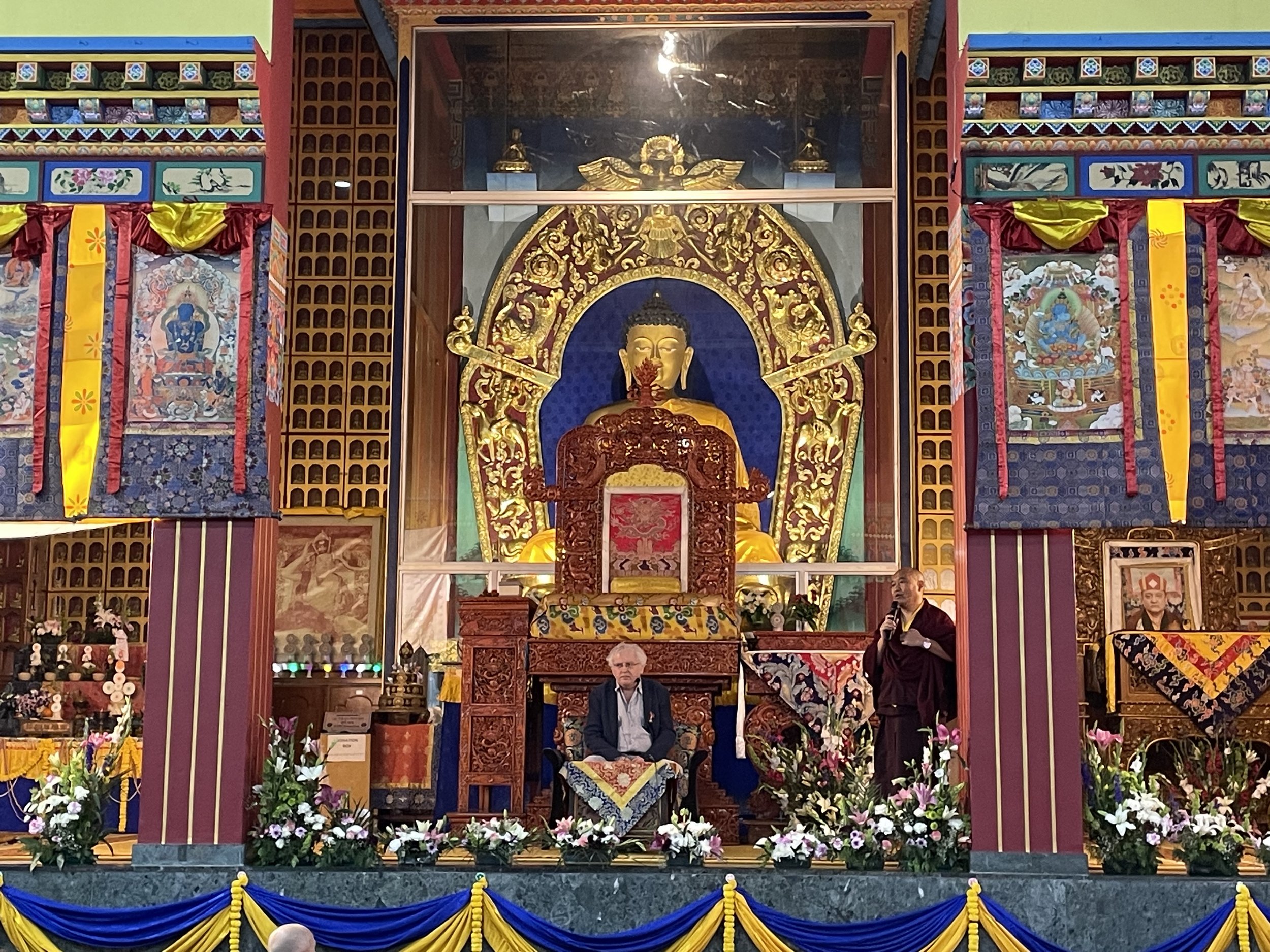
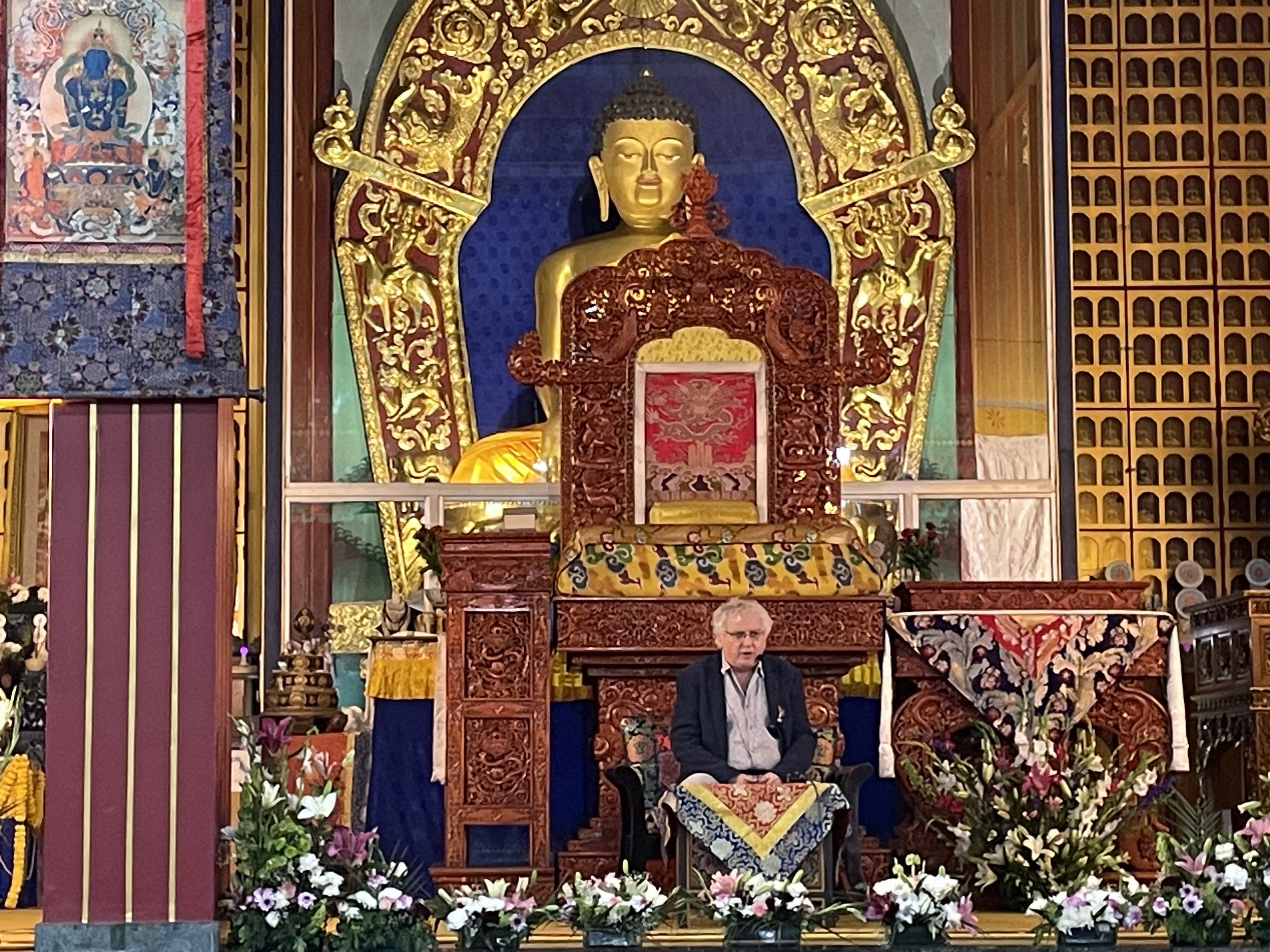
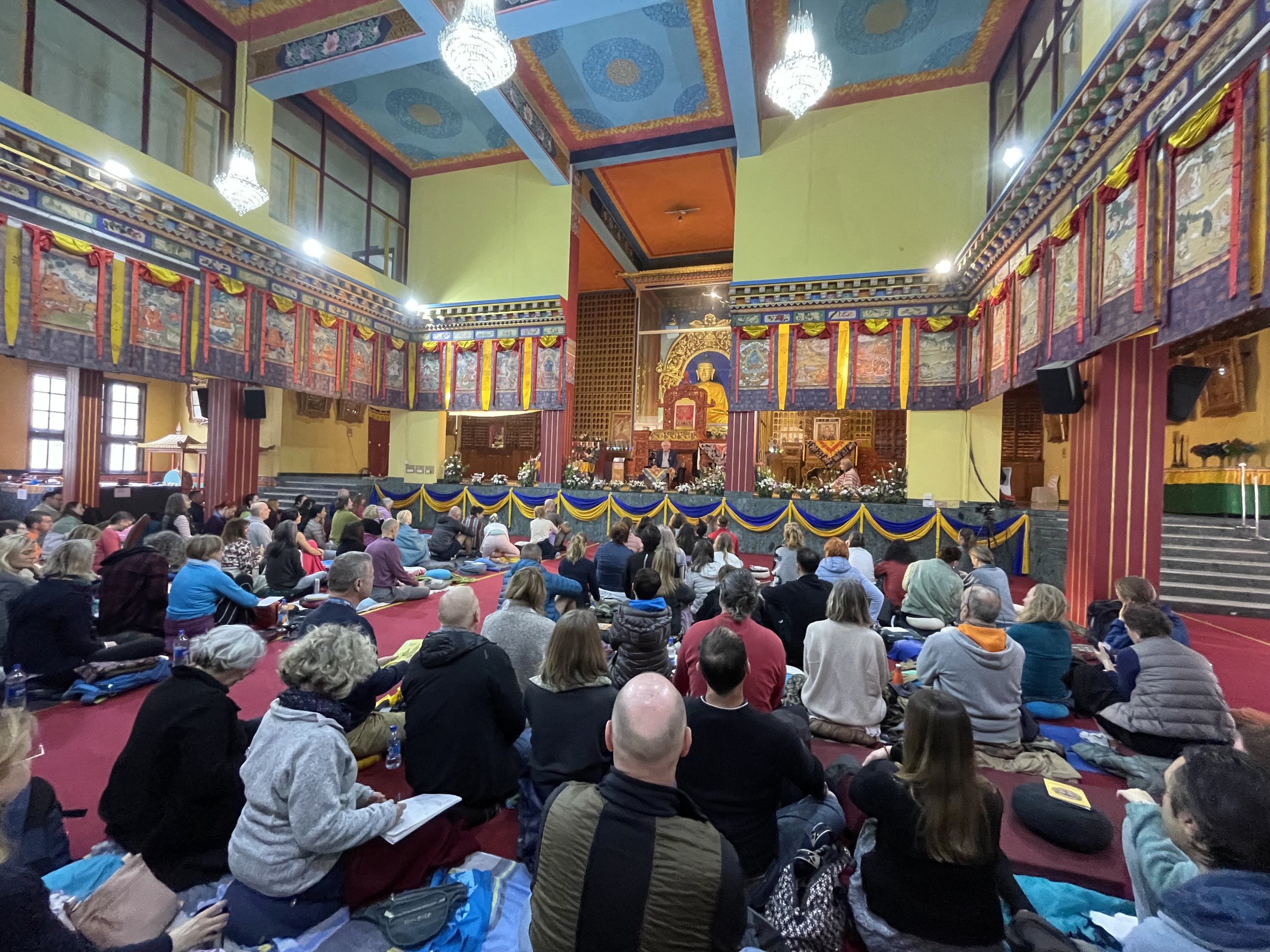
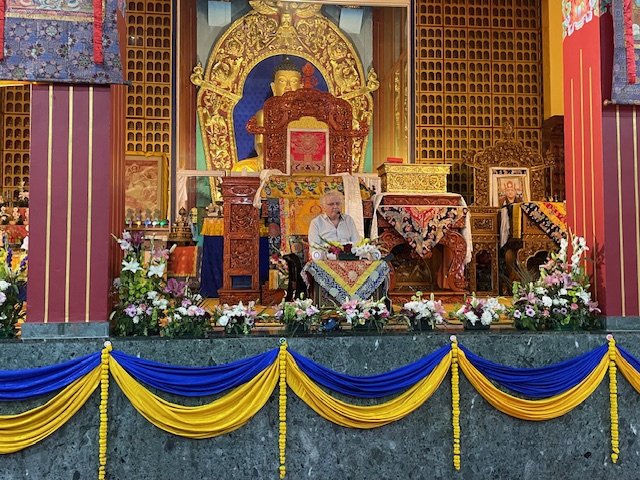
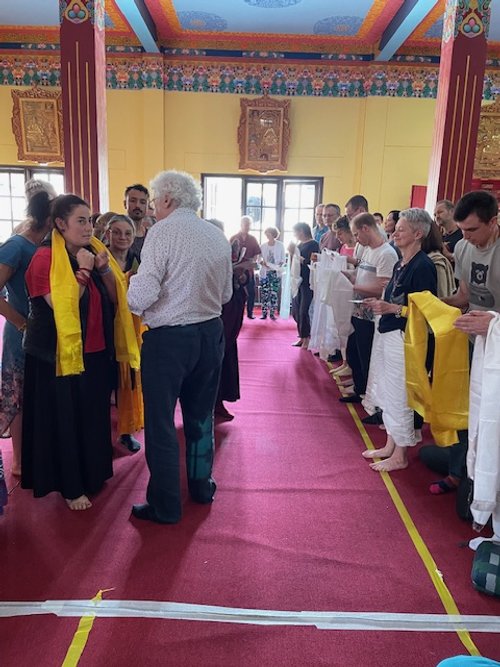
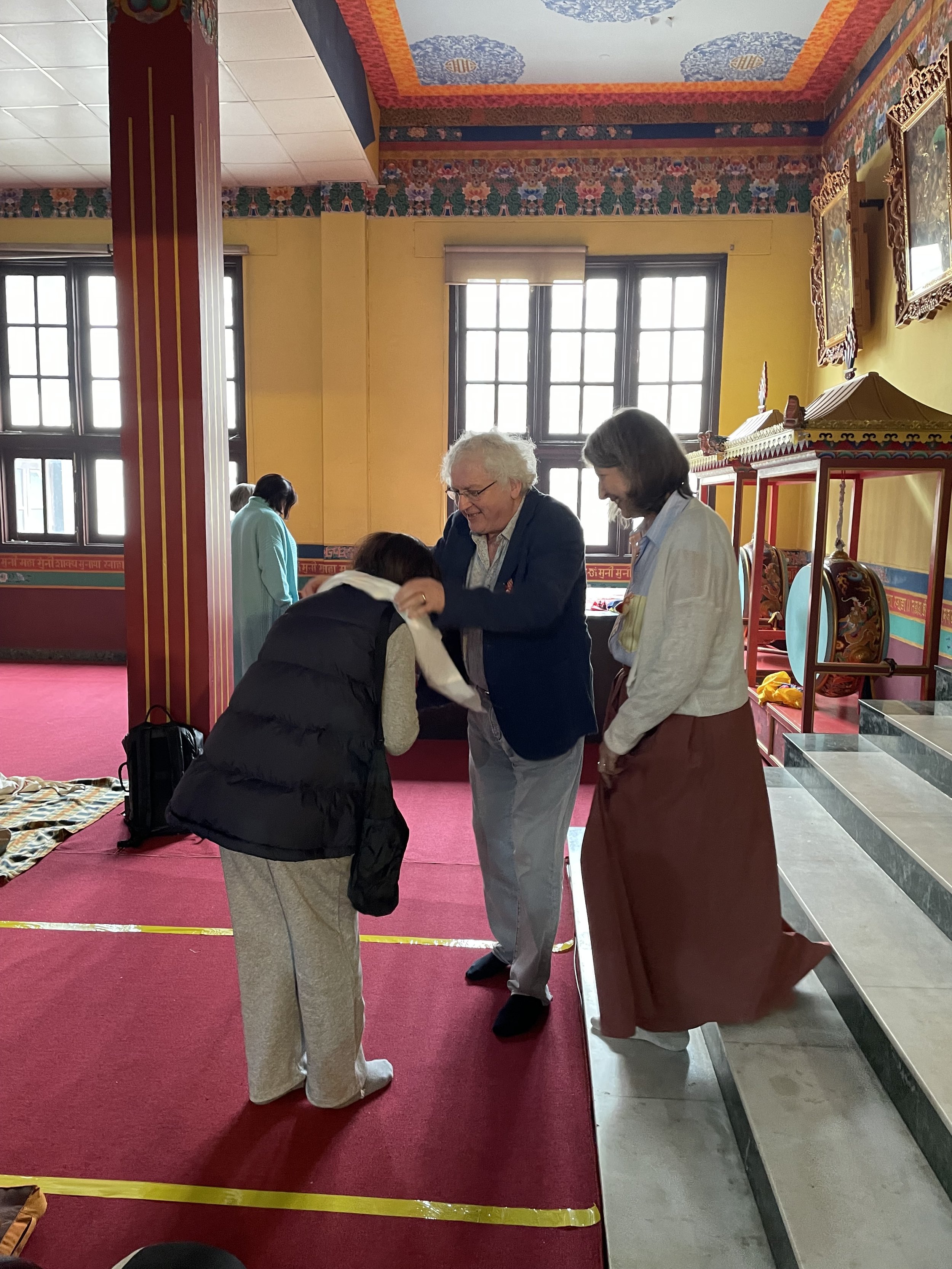


Lama Jampa went on to outline the content of the week’s teachings, describing how it contained the three elements necessary for one to become learned in the dharma: teachings on the Madhyamaka to develop understanding of the true nature of reality; teachings on logic, pramana, for correct understanding of dependent origination in conventional reality; and teachings on the practice of the paramitas and the vajrayana, the two types of conduct of a bodhisattva.
Finally, Lama Jampa reminded everyone of the need to receive the teachings in the correct way, avoiding the three faults of the pot (upside down, cracked or poisoned) and maintaining the three perceptions (ourselves as sick, the teacher as doctor and the teachings as medicine that we need to take).
The next day Lama Jampa began teachings on the Zhentong or Great Madhyamaka, using the commentary by the first Jamgӧn Kongtrul entitled ‘The Immaculate Rays of the Vajra Moon’. The program at this year's Public Course included teachings by His Eminence the 4th Jamgӧn Kongtrul Rinpoche and Lama Jampa commented on how auspicious it was that the HE the 4th Jamgӧn Kongtrul was teaching at KIBI at the same time.
The commentary begins by setting out the four schools of Buddhists tenets and Lama Jampa explained how helpful it is to have an understanding of the lower views to enable a gradual progression toward the highest Madhyamaka view. He also showed how this theoretical understanding then forms the basis for actualising the view in meditation.
‘This is not just an introduction to the theory of Zhentong but is also a guide to meditation on the view, where we seek to make the view a reality.’
Lama Jampa described how Jamgon Kongtrul contributed to the revival of the Zhentong Madhyamaka which had been eclipsed to some extent at that time. He also emphasised the importance of having an ethical basis and the correct world view before one can hope to develop the transcendental view.
During the final session, Lama Jampa Thaye explained that in order to access the view it is important to cut through attachment to phenomena which are empty of essence. He also emphasised the importance of 'the four reliances':
1. Rely upon the teachings and not the person
2. Rely upon the meaning not the words
3. Rely upon the definitive not the provisional teachings
4. Rely upon yeshe (buddha nature) not namshe (ordinary consciousness).
The session concluded with a Q&A session in which Lama Jampa emphasised the importance of studying the teachings one has received. He said that although it was good to attend the teachings, one only gets 10% of the benefit from doing so; 90% of the benefit comes from studying the text one has received.
The course ended with the bestowal of the rare initiation of Vajravidarana by His Holiness Karmapa, followed by the closing ceremony.
There were over 500 attendees from 45 countries this year and thanks were given to all of the teachers and the many volunteers who made the smooth running of the course possible.
